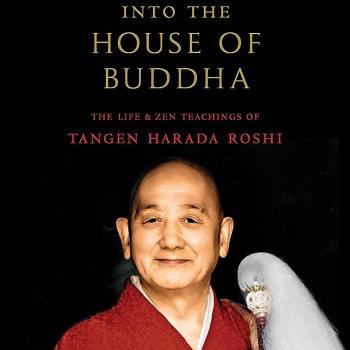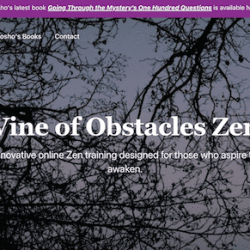Question: Dosho…you may know the therapy from Japan, Morita Therapy. I would call it everyday mindfulness with no special idea of practice. Maybe self-forgetfulness in action. It is good for people like me who have anxiety issues. I also talked to a man named M. Saito from Japan. He used Zen to help cure his anxiety problems, but no formal zazen. I asked him many questions and he explained things to me using Zen sayings. He reports rare anxiety problems after 10 years of work. Also, Morita seems to have also realized what a healthy mind is like with no zazen.
Am I missing something here? For me it seems necessary to ask, is there some difference between everyday presence, whether we call it mindfulness practice or surrender to Life, and formal sitting practice? I have to take up the question why we do it. If precepts, awareness and action were enough, I assume Dogen and others would have said so. I don’t find any Zen teacher saying so. Maybe there is a difference between establishing a smooth balanced mind in daily life vs. glimpsing your true nature? But some great moments of stillness have arisen for me in the middle of really mindless action.
Response: I am familiar with Morita Therapy (or click here for a limited preview of Quiet Therapies: Japanese Pathways to Personal Growth).
There are, of course, many reasons to practice: health, supernormal feats, arrogance, curiosity about the true face, and wanting to roll like black ball rolling through the dark night.
In an “ideal” world, we first clarify our intention and then undertake a practice that fits the intention. In “reality,” we are drawn to practice for what we imagine it is rather than for what it is, buffeted by various voices in our internal dialogue/chorus discussing what we’re doing and why. Then we sort things out as we go.
Precepts and mindful action are powerful healing practices and can allow a person to delight in wholesome states of mind, rather than torment, and discover well being. No doubt about it.
I’m reminded of Freud commenting that his treatment allowed his patients to live lives of “common unhappiness,” rather, I suppose, than “uncommon unhappiness.”
Dharma practice, however, is a much more powerful thing than simply helping us to heal.
Here’s Daido Loori Roshi (one of my teachers) on this point:
“What person’s life is lacking? Each one of us is perfect and complete, lacking nothing. The pivotal question is, “How do you get to that?” The answer is simple—practice. Practice is not an educational process of collecting reams of information. Practice is exactly the opposite of accumulating data. It involves peeling back layers of conditioning, the ways we have defined our lives, to get to what is underneath that. Buried below those layers of conditioning is a Buddha. That is what needs to be realized. Regardless of what aspect of training we use to get to the ground of being, the fact is that ground is there. Realized or not, it is there.
“When we have not yet realized our Buddha nature, we live our lives out of delusion, out of our conditioning. That leads to a lot of pain and suffering. When we realize our Buddha nature, we enter the realm of clarity and peace. The world is the same world. But our way of appreciating ourselves and the universe is transformed. We call that enlightenment. It is true human nature. We do not need genetic designers for it. Nobody can improve this perfection. That is what it means to be a great human being—to truly be human. Most of us have never seen a true human being. We have seen some qualities surface here and there in special people. I have no doubt that true human qualities are not hate, greed, and jealousy, but compassion, wisdom, and love. How this next century goes depends a lot on how much we are able to get in touch with our true humanity. Please take care of this great matter.”
Well being work is for health and ground of being work for realization. Sometimes it’s all mixed up and calls to be clarified.
Above, Daido emphasizes the need for the ground of being to be realized through practice. This requires that we turn the dharma wheel. When we allow the dharma wheel to turn us, this is practice by realization and there is really nothing to be done.
And so we can get going with great energy. That is to take care of this great matter.











